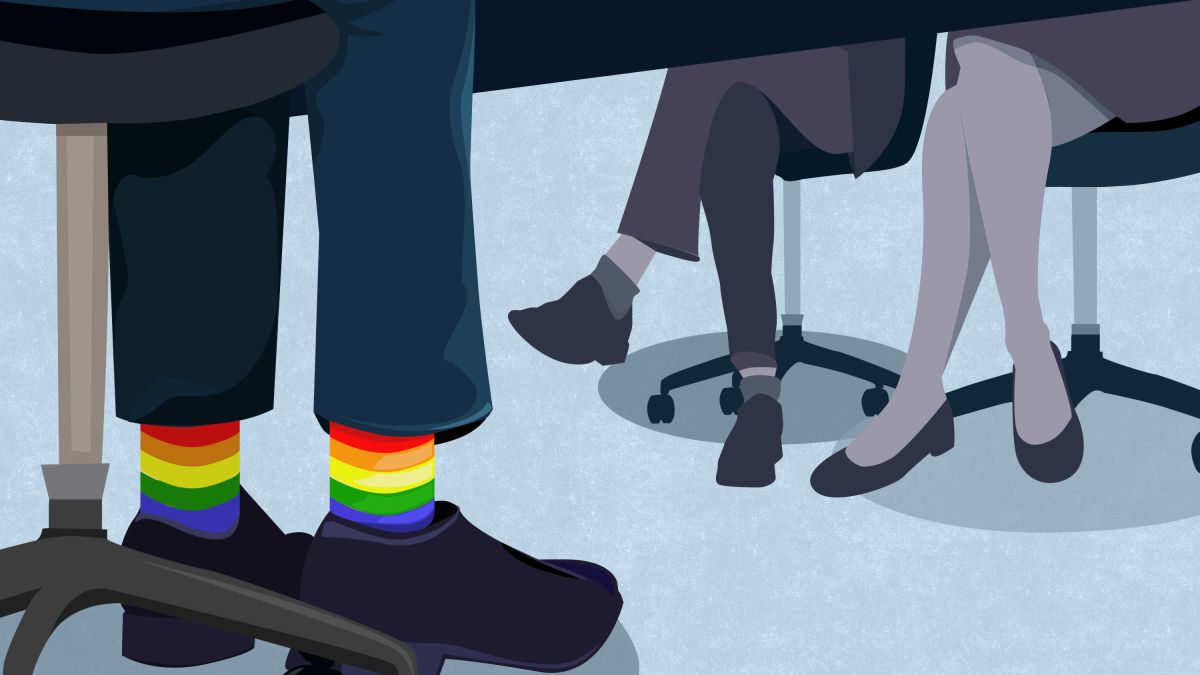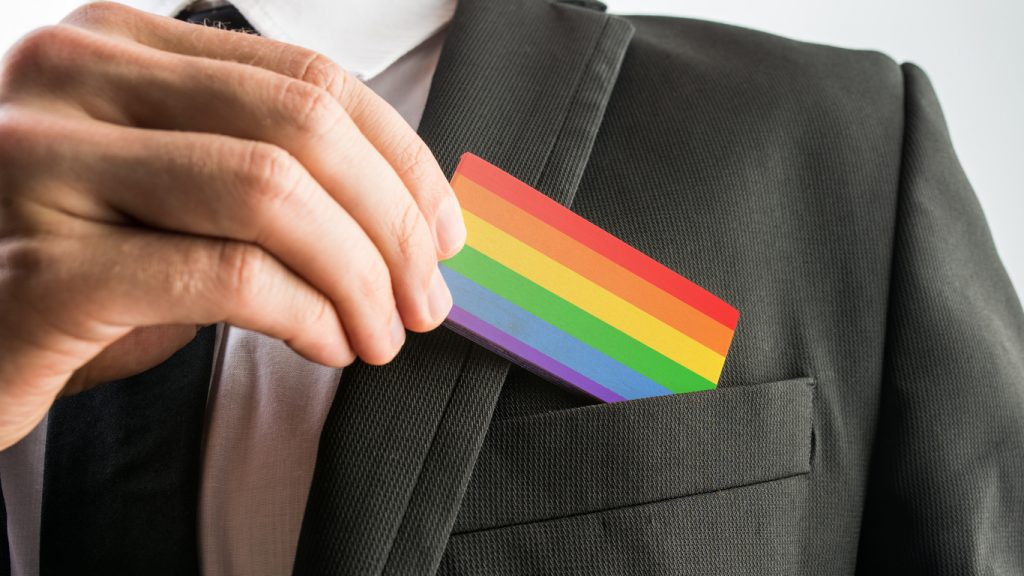By Jon Gould
When queer people gather, the topics of discussion will inevitably circle around to the one experience we all share: The Coming Out Story. For many queer people, including LGBTQ in architecture and design, coming out is a milestone in our lives, and the Coming Out Story is about the acceptance we find in ourselves to tell others about who we are. The stories may differ in detail but share similar anxieties, fears, and hopes. Some are unexpected, where one is forced out of the proverbial closet before they are fully ready. Some are filled with love. Some apprehension. And others devastation. But that story of the first-time people learned who we really are will always be a common thread that defines the queer experience.
While you never forget your first, what rarely gets talked about is your second, or third, or hundredth time. That time you must come out to your co-workers, or teachers, or your second cousin twice removed at that large family gathering you have been avoiding for years. I want to talk about those times, what it means to come out at work, at a job site, or at a client meeting. When it is important, when it isn’t, and why it is something that I struggle with even so many years after my first.
Before I begin, I want to make clear that my experiences will not be universal. I am a white, cisgender man, and I navigate that world with those privileges. Not everyone is afforded those luxuries, so I know my experiences will not relate to every queer person.
People of color, women, and transgender people will have vastly different experiences. But that is why I want to talk about my journeys, because I know I have the power and privilege to do so. This is my story and my experience, but I hope it can shed some light on the queer experience and will help others understand a little of what queer people go through.

Coming Out at Work
Being in a professional setting, every time I meet a new client or go to the job site for the first time or interview for a job, for all intents and purposes I am back in the closet. For my work, my sexuality doesn’t matter – I can draw a door detail as good as any straight man. But for personal connections, I feel it is important for the people I am building a relationship with to know I am gay. You’d be surprised at how hard it is to slip “oh, by the way, I’m gay” into a conversation about generator locations. How do I come out again to help build that personal relationship with my co-workers, my peers, or my boss? And if I know I will be working with this person for a while, then it is important for me to come out sooner than later because it will just get harder and more awkward the longer I wait. We all want to avoid the inevitable “How is your wife” question that will come up 3 months from now.
For me, coming out is important. An important part of who I am, and an important way to connect with people around me. I feel that not telling people might make building relationships harder. Also, there’s the fact that I’m not necessarily what you would call “straight-acting,” and I don’t want people questioning or gossiping about my sexuality around the office. Coming out also helps me to be in control of my narrative in the professional environment. By being vulnerable and open about my life, I can develop deeper connections with my peers that help create a more hospitable work environment.
Coming Out to Clients
Architecture and design are service-based industries, and part of that service is working closely with our clients to deliver our projects. Our services and ability to design great projects have nothing to do with my sexuality, however, the relationship between architect and owner needs to be close and open. While one may argue that your personal life and professional life do not need to be intertwined, and owners have no right to know about sexuality, I find it freeing to be open and honest with owners as much as possible.
Coming out isn’t something I schedule or plan on doing, but if the opportunity presents itself, for instance talking about my husband, I will take it just to break that boundary. I will not hide a part of myself and I want to choose when and where I come out, on my own terms. Coming out isn’t necessary, and it shouldn’t be. But creating strong relationships with clients is vital to our profession, and I find the more barriers I can bring down between us the better. My hope when I come out is that the client can better understand who I am as a person and designer and that can lead to a stronger interpersonal connection.
Coming Out on the Job Site
One thing I have learned about being a gay man on job sites is this: I have almost nothing in common with contractors. Outside of our love for waterproofing details, the conversations tend to dry up quickly. I don’t hunt, I don’t fish, and I don’t follow sports enough to know who to root for. However, if I am doing CA on a project, chances are I will be interacting with this team daily for a prolonged period, and it will be necessary to develop a report beyond dimensions and details.
Coming out to the contractor will not change the fact that I don’t hunt, or fish, or follow sports, but it can help the people I work with understand who I am better. This isn’t necessarily a gay thing, but a relationship-building technique to find common interests. Through coming out to people, I find that we can work to find topics we can discuss beyond work and build a fellowship that will make RFPs and submittals move smoother, and change orders become less of a burden. Also, before heading to the job site, I have found it very helpful to at least glance at the sports page. GO TEAM!
Creating Safe Spaces to Come Out
Being queer is strange in that a queer person can choose not to come out. Unlike other marginalized groups, coming out is a choice that we make every day, through our actions and words. Sometimes it is better, and safer, for queer people to stay inside the closet than to step out. That’s why it is important to question a company or team’s non-discrimination policies and sexual harassment policies to make sure they include sexual orientation and gender identity.
While we are protected by Cooper Carry’s policies, when we step into a client meeting or onto a job site, it helps to know there are protections in place to prevent harassment and discrimination there as well. Just as architects aren’t supposed to police the safety of a job site, we don’t get to control their HR policies either. Advocating for strong, inclusive policies prohibiting discrimination based on gender identity and sexual orientation can help your LGBTQ employees feel safe to come out and be themselves. And I believe this will lead to stronger relationships with co-workers, clients, and contractors which will help with business development and retention.

Every Day, Another Closet
Hi, I’m Jon, and I’m an architect, and I’m gay.
I wish it were that easy. But it’s not, and every day I have to make the choice to come out. It’s not something that most people have to think about, but it is constantly in the back of my mind. I choose my words carefully, I code-switch around my straight colleagues, I look for ways to inject my gayness into conversations, so I can come out without awkwardly announcing it. It’s part of navigating a heteronormative world. It does get easier, and I do find that my interactions and relationships with people get stronger after I come out. And I am lucky to be working at Cooper Carry which values diversity and inclusion and supports LGBTQ through its actions and policies. Again, I do want to reiterate that my experiences are not universal, and being a white man has made many interactions easier for me.
Coming out is always a personal choice and should be made with care, intention, and most of all, when you are comfortable and safe. So, let’s continue to make safe spaces where our LGBTQ friends and family can come out and we can build stronger, more meaningful relationships with our clients and co-workers.
This article about the experience of being LGBTQ in architecture and design was written by Jon Gould for our firm’s Equity, Diversity and Inclusion Council (EDIC) Winter 2021 newsletter.
